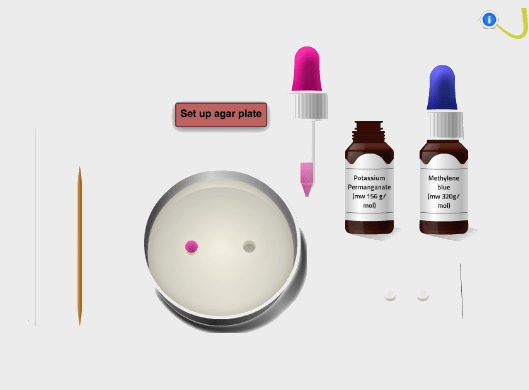Intro
As a lecturer in anatomy and physiology at the Central Queensland University, Rebecca Vella was interested in developing new ways of teaching her practical classes while addressing the theoretical basis that underlies the exercises. With the help of Smart Sparrow, she created a virtual lab space for her students to actively work through practical experiments related to the biology of cellular transport, and engaging online exercises to teach them the theories behind their results.
Challenge
Traditionally, practical exercises are taught in a physical lab, and students are expected to learn the theoretical explanations behind what they’d just experienced upon returning to the classroom. Such a disjointed way of learning is not effective, but in an online environment, students could learn both theoretical and practical content in the same space.
What Rebecca envisioned was a virtual lab space, where students could perform their practical exercises, exactly as they would in real-life, except that their education would be reinforced immediately by learning the theories behind what they were seeing in their results. In a virtual lab space, students could take all the time they needed to familiarize themselves with the equipment and methods, and the content could be designed by the teacher to address their strengths and weaknesses.

Solution
Having secured funding from the School of Medical & Applied Sciences, Rebecca worked with technical staff at Smart Sparrow to develop her virtual lab and online exercises.
The topic she chose was an investigation into how substances are transported across the cell membrane, examining the differences between passive and active cellular transport and several key features of osmosis. Once she had written the lesson content, Smart Sparrow took her through the process of adapting it to an online learning experience, which included building an interactive virtual lab that encourages students to actively explore how the temperature and weight of different substances affect their movements through the cell membrane.
Adaptive pathways were developed by using checkpoint questions that identify if a student is having difficulties with certain concepts of the lesson. The student will then either be redirected to more specific content that explains the problem in greater detail, or receive adaptive feedback (via a pop-up) that can point them in the right direction before they attempt the question again.
Not only does this make Rebecca’s lesson more personalized for each student, but everything is recorded in the system’s inbuilt analytics program to allow her to assess her lesson structure and content and adjust them for future use.
“I really enjoyed this style of learning” - Student user
Results
Since the lesson has been deployed, over 400 students have completed it, and their responses have validated Rebecca’s vision for how she’d like to continue teaching practical and theoretical material online. When asked if the lesson improved their learning on the topic of cellular transport, the majority of the student users responded positively, and also said they’d recommend the lesson to their friends.




